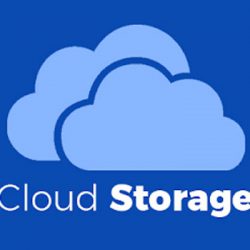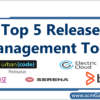Openshift Admin: How to add node to the cluster in openshift Local
To add a node to an OpenShift cluster running locally using OpenShift Local (previously known as CodeReady Containers or CRC), the process involves configuring a multi-node cluster in OpenShift Local….
Read more »Openshift Admin: How to add node to the cluster in openshift ARO
New Method : How to Add Nodes to ARO (Worker Node Scaling) If you are using the latest ARO architecture, which now uses Azure Machine Pools (based on the OpenShift…
Read more »What are Security Context Constraints (SCC) in OpenShift?
🔐 What are Security Context Constraints (SCC) in OpenShift? Security Context Constraints (SCC) are OpenShift’s mechanism for controlling security-sensitive aspects of how containers run in the cluster. SCCs define a…
Read more »OpenShift-Supported Container Images Registry
OpenShift provides officially supported container images that are fully compliant with its security and operational requirements. These images are designed to run smoothly on OpenShift with non-root users, proper permissions,…
Read more »Terraform tfenv Tutorial: From Basic to Advanced
What is tfenv? tfenv is a Terraform version manager that allows you to easily install and manage multiple versions of Terraform on your system. You can switch between different versions…
Read more »Comprehensive Guide to DNSControl
Comprehensive Guide to DNSControl Table of Contents 1. Introduction to DNSControl DNSControl is an open-source tool developed by Stack Exchange to manage DNS zones across multiple providers using a declarative,…
Read more »OpenShift Container Platform (OCP) Installation and Configuration Guide
# Deployment Method Platform/Infra Best Use Case Automation Level Notes 1 IPI (Installer-Provisioned Infra) AWS, Azure, GCP, vSphere Fast, full-stack automated production setup ✅ Fully automated Installer provisions infra and…
Read more »OpenShift Install & Configurations using Azure Red Hat OpenShift (ARO) with Azure Portal
Here is the latest step-by-step guide (as of May 2025) to install and configure OpenShift using Azure Red Hat OpenShift (ARO) directly from the Azure Portal. ☁️ What is Azure…
Read more »OpenShift Install & Configurations using OpenShift Local in Linux laptops/desktops
Here is the correct and updated step-by-step guide to install and configure OpenShift Local (formerly CRC – CodeReady Containers) on Linux laptops/desktops for local development and testing. 🐧 OpenShift Local…
Read more »OpenShift Install & Configurations using OpenShift Local in MacOS laptops/desktops
Here is the step-by-step guide to correctly install and configure OpenShift Local (CRC) on macOS laptops or desktops for local OpenShift 4.x development. 🍎 OpenShift Local on macOS – Overview…
Read more »About Elastic (The Company)
Certainly! Here’s a detailed overview of Elastic N.V. (commonly known as Elastic, the company behind Elasticsearch), covering its transformation, history, key milestones, product evolution, and major release timelines. 🏢 About…
Read more »How to install kibana and configure with Elasticsearch
Download & Extract kibana 8.x Configure kibana 8.x Download, Extract, Install and Configure kibana 9.x vi config/kibana.yml ./bin/kibana –allow-root Provide Enrollment Kye of ElasticSearch Login to Kibana using elasticsearch username/password…
Read more »Install and Configure Elasticsearch: Step by Step Guide
Install and Configure Elasticsearch in Linux Download and Extract Elasticsearch Run and Verify Elasticsearch 7.x Run and Verify Elasticsearch 8.x Run and Verify Elasticsearch 9.x ubuntu@ip-172-31-38-122:~$ curl –cacert /home/ubuntu/elasticsearch-9.0.0/config/certs/http_ca.crt -u…
Read more »How to install & configure Elastic Filebeat?
Filebeat client is a lightweight, resource-friendly tool that collects logs from files on the server and forwards these logs to your Logstash instance for processing. Filebeat is designed for reliability…
Read more »How AI Solvers Are Changing the Way We Study for Exams
Almost every industry is being transformed by artificial intelligence (AI): transportation, healthcare, education, among others. AI applications in the field of education are affecting the way a student prepares for…
Read more »The Rise of AI Detection: Are Plagiarism Checkers Keeping Up?
Photo by Glenn Carstens-Peters from Unsplash.com It’s no secret that artificial intelligence has completely shaken up how we write, learn, and share ideas. With tools like ChatGPT, writing an essay,…
Read more »DNS concepts
📘 1. Basics of DNS What Is DNS? The Domain Name System (DNS) is the Internet’s phonebook. It translates human-friendly domain names (like www.example.com) into IP addresses (like 192.0.2.1) that…
Read more »Managing MariaDB Root Password and Connection Behavior in XAMPP (Ubuntu)
☁️ Introduction When working with MariaDB/MySQL inside XAMPP on Ubuntu, many developers face confusing issues related to root password behavior, localhost vs 127.0.0.1 access, and authentication plugins.This tutorial provides a…
Read more »
Comprehensive Tutorial on Cloud Storage
📖 1. What is Cloud Storage? Cloud Storage refers to the service model where data is stored, managed, and accessed remotely over the internet instead of being stored locally on…
Read more »An introduction of Laravel Boilerplate
Laravel Boilerplate is a comprehensive starter kit designed to accelerate the development of Laravel applications by providing a robust foundation with pre-integrated features. Developed by Rappasoft, it offers a wide…
Read more »OpenShift 4 Advance Training (Administrator & Developer)
🚀 OpenShift 4 Advance Training (Administrator + Developer) 📌 Section 1: Why Learn OpenShift? OpenShift is the world’s leading Kubernetes platform, trusted by enterprises across industries for running mission-critical applications…
Read more »Dynatrace Sample Application for Demo and Lab using easyTravel & EasyTrade
easyTravel Demo Application in Docker This project builds and deploys the Dynatrace easyTravel demo application in Docker. All components are readily available on the Docker Hub.URL – https://github.com/Dynatrace/easyTravel-Docker EasyTrade EasyTrade…
Read more »What is Openshift S2I?
🎯 What is S2I? S2I = Source-to-Image ✅ It’s a build process invented by OpenShift (Red Hat) to automate: “Take my source code + take a base image → and…
Read more »Limitation with OpenShift with Docker Images compare to Vanilla Kubernetes
Let me explain very clearly, so you fully understand why some images work, some don’t in OpenShift 🚀: 🎯 Big Picture: OpenShift Is Different from Vanilla Kubernetes Topic Kubernetes OpenShift…
Read more »Real-World Company Using OpenShift 4.14 in Production
Imagine a FinTech company (like a bank or payment platform) running critical apps. They need: They deploy OpenShift 4.14 like this: 🧩 Architecture Diagram (High Level) 🔥 Infrastructure Components Layer…
Read more »Compare OpenShift Vs Kubernetes
Kubernetes = Open-source container orchestration platform (base engine).OpenShift = Red Hat’s enterprise platform built on top of Kubernetes + many important extras: ✅ Enterprise features✅ Security features✅ Developer-friendly tools✅ Built-in…
Read more »Openshift: Difference Between DeploymentConfig and Deployment
Feature DeploymentConfig (DC) Deployment (K8s Deployment) Belongs to OpenShift-only (legacy) Kubernetes-native (standard) API Group apps.openshift.io/v1 apps/v1 First Introduced OpenShift 3.x Kubernetes 1.x Purpose Deploy/manage pods with extra OpenShift features like…
Read more »Step-by-Step OpenShift WordPress Deployment Demo
🛠 Prerequisites: 🔥 Step 1: Login to OpenShift Cluster Or via the Web Console. 🏗 Step 2: Create a New Project (Namespace) (You can also create it from Web Console:…
Read more »

